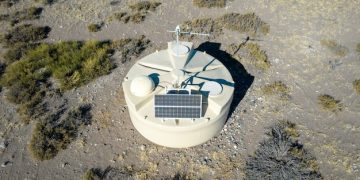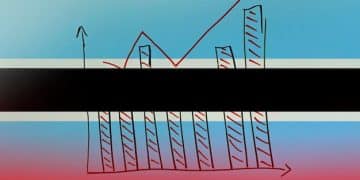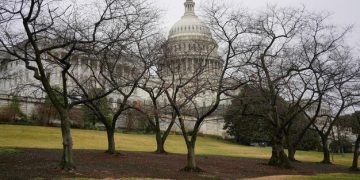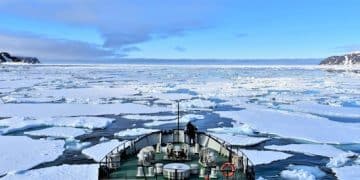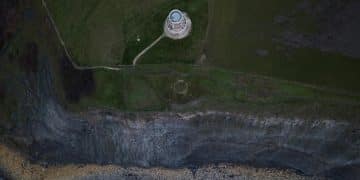World Bank’s New Lending Policies: Impact on US Investment

Understanding the World Bank’s New Lending Policies: How Will They Affect US Investment in Emerging Markets? Recent shifts prioritize climate action, transparency, and sustainable development, potentially reshaping US investment strategies and risk assessments in these regions.
The World Bank is evolving, and this evolution has significant implications for global investments, especially for the United States. Understanding the World Bank’s New Lending Policies: How Will They Affect US Investment in Emerging Markets? is crucial for investors, policymakers, and anyone interested in international finance.
Understanding the World Bank’s Evolving Mission
The World Bank, since its inception, has been a cornerstone of global development. In recent years, however, its mission has broadened to address pressing global challenges, including climate change and inequality. Let’s delve into what these shifts mean for investments.
A Shift Towards Sustainability
One of the most noticeable changes is the World Bank’s increased focus on sustainable development. This includes funding projects that promote renewable energy, conserve natural resources, and build climate-resilient infrastructure.
Transparency and Governance
The World Bank is also emphasizing transparency and good governance in its lending practices. This means requiring borrowing countries to implement reforms that promote accountability and reduce corruption.
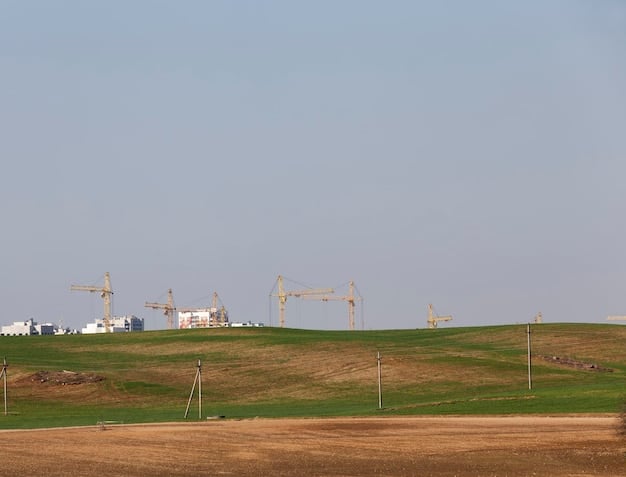
- Increased emphasis on environmental, social, and governance (ESG) factors.
- Prioritizing projects that contribute to the UN Sustainable Development Goals (SDGs).
- Stringent requirements for environmental impact assessments.
- Promotion of open data and citizen engagement in project design and implementation.
These changes present both challenges and opportunities for US investors. On one hand, they may need to adjust their investment strategies to align with the World Bank’s new priorities. On the other hand, they may find new avenues for investment in sustainable development projects.
In conclusion, the World Bank’s evolving mission reflects a broader global shift towards sustainability and inclusive growth. Understanding these changes is essential for US investors seeking to navigate the evolving landscape of emerging markets.
New Lending Priorities: A Closer Look
Diving deeper into the World Bank’s new lending priorities reveals specific areas of interest that could significantly influence where and how US investments are made. These priorities signal a shift in the types of projects getting funded.
Climate Action Dominates
Climate change mitigation and adaptation have become central to the World Bank’s lending strategy. This involves financing projects that reduce greenhouse gas emissions, such as renewable energy initiatives, and helping countries adapt to the impacts of climate change, such as building flood defenses.
Investing in Human Capital
Another key priority is investing in human capital, including education, healthcare, and social protection. The World Bank recognizes that these investments are essential for promoting long-term economic growth and reducing poverty.
- Support for universal healthcare coverage and improved access to quality healthcare services.
- Investment in skills development and vocational training programs.
- Expansion of social safety nets to protect vulnerable populations.
These lending priorities create potential overlaps and synergies with US foreign policy objectives. By aligning their investments with the World Bank’s priorities, US investors can contribute to global development efforts while also advancing their own commercial interests.

In summary, the World Bank’s new lending priorities reflect a commitment to addressing climate change, investing in human capital, and promoting inclusive growth. US investors who understand and align with these priorities are more likely to succeed in emerging markets.
Impact on US Investment Strategies
The World Bank’s policy recalibration directly impacts how US investors approach emerging markets. Adjustments in strategy are becoming necessary to align with these changes, affecting risk assessment and portfolio composition.
Reshaping Risk Assessment
US investors will need to incorporate ESG factors into their risk assessment models. This means considering the environmental and social impacts of their investments, as well as governance-related risks, such as corruption and political instability.
Portfolio Diversification
The new lending policies may also prompt US investors to diversify their portfolios by shifting capital towards sectors aligned with the World Bank’s priorities, such as renewable energy, sustainable agriculture, and climate-resilient infrastructure.
Opportunities for Public-Private Partnerships
The World Bank is increasingly promoting public-private partnerships (PPPs) to finance development projects. This creates opportunities for US investors to collaborate with governments and multilateral institutions in emerging markets.
- Greater emphasis on due diligence and compliance.
- Integration of climate risk assessments into investment decisions.
- Adoption of sustainable investment frameworks and standards.
By embracing these changes, US investors can not only mitigate risks but also unlock new opportunities for growth and impact in emerging markets. A proactive approach is essential for long-term success.
In conclusion, the impact on US investment strategies is multifaceted, requiring adjustments in risk assessment, portfolio diversification, and a proactive approach to public-private partnerships. These changes are crucial for maintaining competitiveness.
Challenges and Opportunities for US Investors
Navigating the new landscape requires understanding the challenges, such as regulatory hurdles, and recognizing the opportunities, like first-mover advantages in new sectors. This will shape the future of US investment.
Navigating Regulatory Hurdles
One potential challenge is navigating the regulatory hurdles associated with sustainable development projects in emerging markets. These projects often require complex permitting processes and compliance with international environmental standards.
Securing Project Financing
Another challenge is securing project financing in emerging markets. The World Bank’s involvement can help de-risk projects and attract private investment, but US investors may still need to overcome financing gaps.
First-Mover Advantages
Despite these challenges, there are also significant opportunities for US investors in emerging markets. By being early adopters of sustainable investment practices, they can gain a competitive advantage and establish themselves as leaders in high-growth sectors.
- Greater market access and preferential treatment for sustainable projects.
- Potential for higher returns and lower risk in the long run.
- Enhanced brand reputation and stakeholder engagement.
Ultimately, the success of US investment in emerging markets will depend on their ability to adapt to the evolving priorities of the World Bank and other development institutions. Strategic planning and execution are crucial.
In summary, the challenges are significant, but the opportunities for US investors are even greater. Successfully navigating this landscape requires a strategic and adaptive approach, seizing first-mover advantages in sustainable sectors.
Case Studies: Successful US Investments Aligned with World Bank Policies
Examining specific case studies highlights how US companies have successfully aligned their investments with the World Bank’s new policies. These examples provide valuable insights and best practices.
Renewable Energy Projects in Africa
Several US companies have invested in renewable energy projects in Africa, aligning with the World Bank’s focus on climate change mitigation. These projects not only generate clean energy but also create jobs and stimulate economic growth.
Sustainable Agriculture Initiatives in Latin America
Other US investors have supported sustainable agriculture initiatives in Latin America, promoting environmentally friendly farming practices and improving the livelihoods of smallholder farmers. These initiatives align with the World Bank’s focus on poverty reduction and food security.
- Detailed project assessments and due diligence processes.
- Strong partnerships with local communities and stakeholders.
- Utilization of innovative financing mechanisms and risk mitigation strategies.
These case studies demonstrate that US investors can achieve both financial returns and positive social and environmental impacts by aligning their investments with the World Bank’s priorities. Collaboration and innovation are key.
In conclusion, these success stories underscore the potential for US investors to thrive in emerging markets by aligning with World Bank policies. They highlight the importance of thorough planning, strong partnerships, and innovative financing.
The Future of US-World Bank Collaboration in Emerging Markets
Looking ahead, collaboration between the US and the World Bank is poised to evolve. This section explores potential future initiatives and the role of innovation and policy alignment.
Increased Focus on Innovation
The future of US-World Bank collaboration will likely involve an increased focus on innovation, including the development and deployment of new technologies and business models that can address development challenges more effectively.
Policy Harmonization
Greater policy harmonization between the US and the World Bank can also help create a more enabling environment for private investment in emerging markets. This includes streamlining regulations, reducing bureaucratic obstacles, and promoting transparency.
- Support for technology transfer and capacity building in emerging markets.
- Enhanced coordination of development assistance efforts.
- Promotion of responsible business practices and ethical standards.
By working together, the US and the World Bank can leverage their respective strengths to promote sustainable and inclusive growth in emerging markets. A coordinated approach is essential for maximizing impact.
In summary, the future hinges on enhanced collaboration, a focus on innovation, and policy harmonization. These efforts will be crucial for promoting sustainable and inclusive growth in emerging markets, driving positive change worldwide.
| Key Point | Brief Description |
|---|---|
| 🌱 Sustainability Focus | World Bank prioritizes environmentally friendly projects. |
| 🤝 Public-Private Partnerships | Encourages collaboration between governments and private investors. |
| 📊 Risk Assessment | US investors must integrate ESG factors. |
| 💡 Innovation Needed | Focus on new technologies and business models. |
Frequently Asked Questions
▼
The World Bank primarily focuses on climate action, investing in human capital, and promoting sustainable development. These priorities guide its lending and project selection processes globally.
▼
US investors will need to adapt their strategies by integrating ESG factors, diversifying portfolios, and exploring public-private partnerships to align with the World Bank’s objectives.
▼
Challenges include navigating regulatory hurdles, securing project financing, and adapting to complex international environmental standards. Overcoming these obstacles requires strategic planning.
▼
Opportunities include first-mover advantages in sustainable investment practices, greater market access, and enhanced brand reputation, leading to long-term financial gains.
▼
The US and World Bank can collaborate by focusing on innovation, harmonizing policies, and coordinating development assistance efforts. This maximizes impact and promotes inclusive growth.
Conclusion
In conclusion, understanding the World Bank’s new lending policies is vital for US investors seeking to navigate the shifting landscape of emerging markets. By aligning with these policies, embracing innovation, and fostering collaboration, US investors can unlock new opportunities for sustainable growth and positive social impact, securing a competitive edge in the evolving global economy.
